
Amazon has launched a STEM Club Toy subscription box! This monthly subscription delivers "handpicked, high-quality Science, Technology, Engineering, and Math toys" to your door for $19.99/month.
This subscription looks like any other shipment from Amazon, with no exterior branding on the box or special insert.

There are 3 age range options:
- 3-4-year-olds (counting, building, and cause and effect)
- 5-7 year-olds (hands-on experiments and explorations of electricity, earth science, and simple math)
- 8-13-year-olds (more complex projects and experiments based on principals of physics, chemistry, and engineering)
This is a review of the 5 to 7-year-old age range Amazon STEM Club, $19.99/month.
My Subscription Addiction paid for this box. (Check out the review process post to learn more about how we review boxes.)
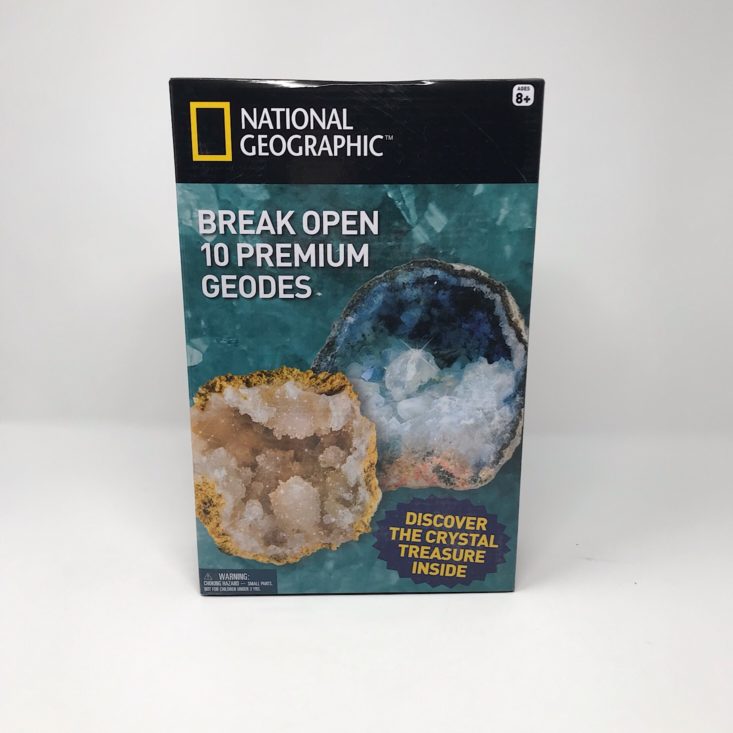
About This Educational Subscription Box for Kids
The Subscription Box: Amazon STEM Toy Club
The Cost: $19.99 per month
The Products: Each month you will receive a different, age-appropriate STEM toy.
Ships to: U.S. (free shipping)
January’s Toy: National Geographic Break Open 10 Premium Geodes
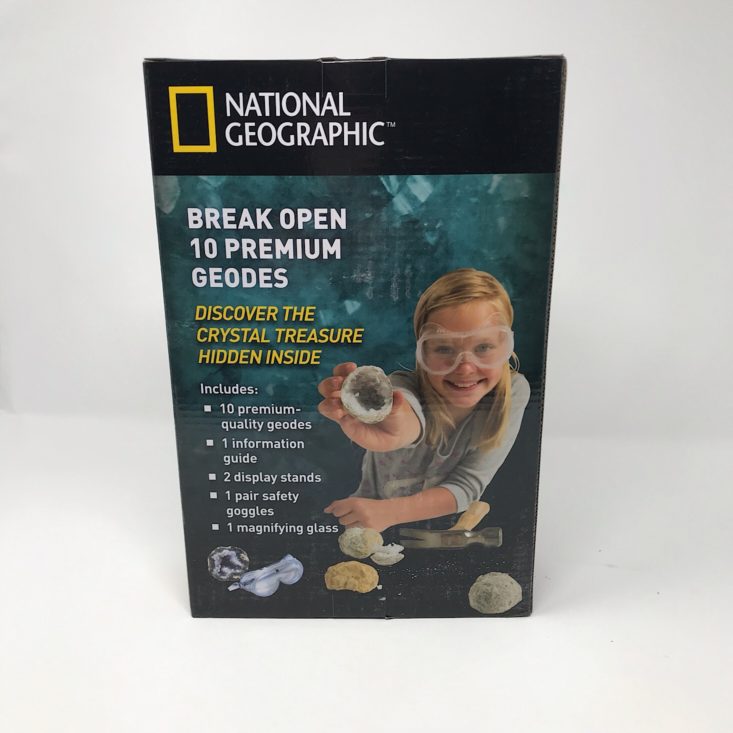
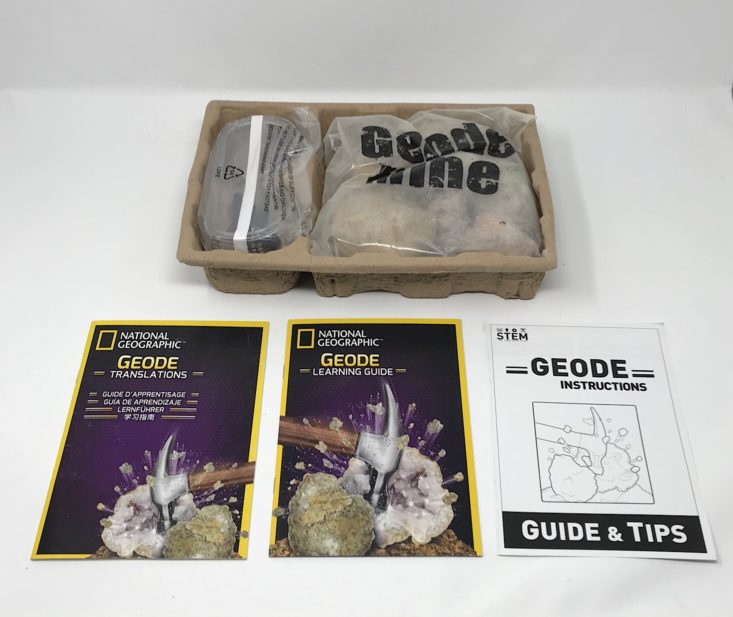
National Geographic Break Open 10 Premium Geodes- Retail Value $24.99
This month our toy comes from National Geographic, which is where our toy from last month came from also. (FYI- that review was updated to show our grown crystals if you want to check it out!) This is meant for ages 8+ but I think that since adult helpers will be doing the majority of the work or at least providing supervision, it is still a good kit for any age really.
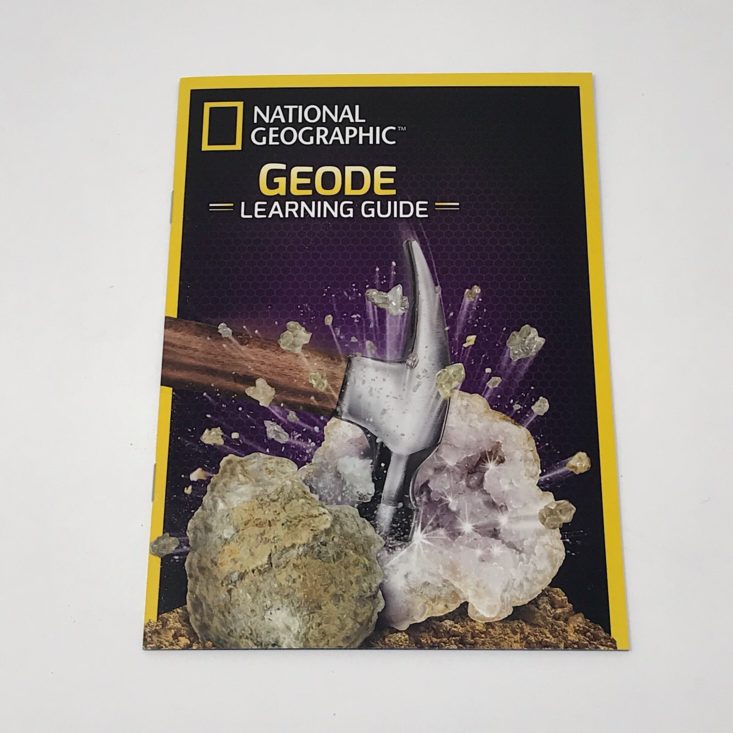
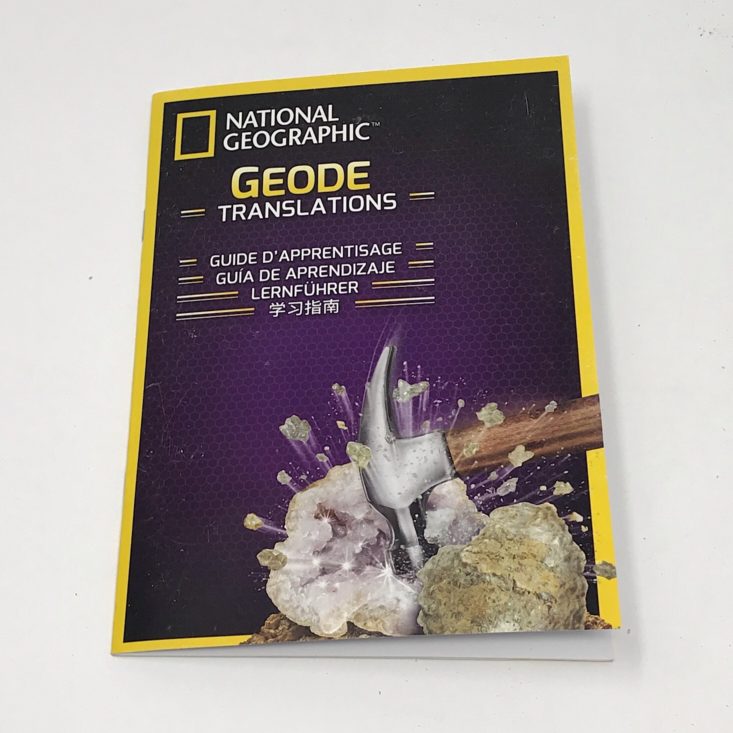
They included a great learning guide and also provided a book filled with translations in several different languages.

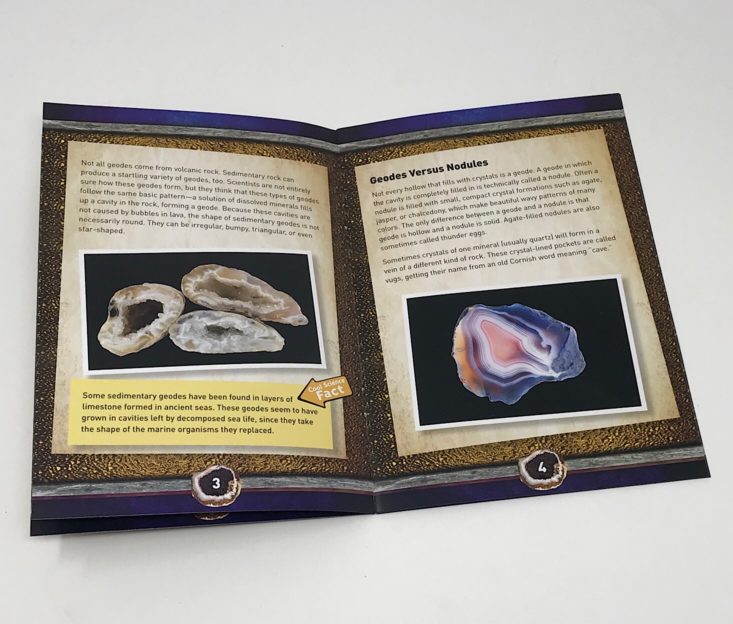
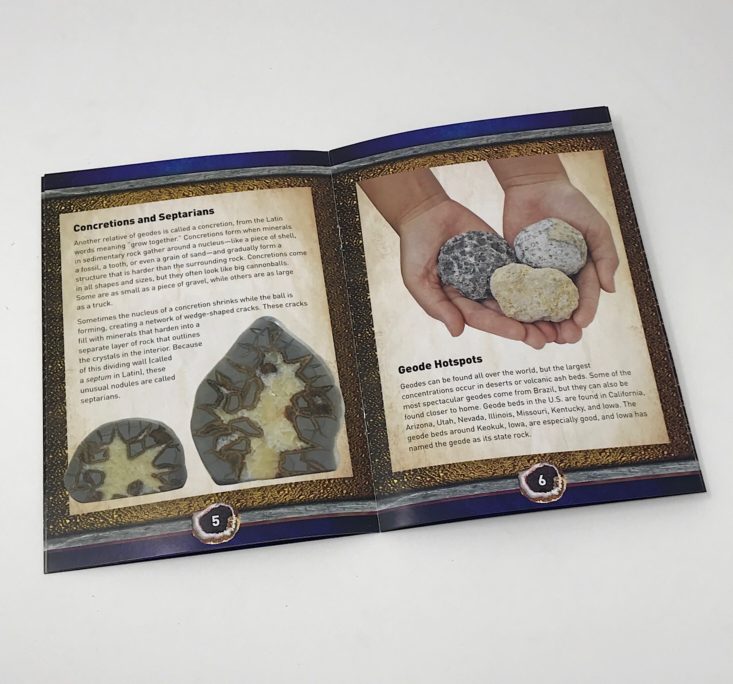
The guide was filled with large, detailed photographs and information about geodes and how they are formed as well as where to find them. It was all very educational!
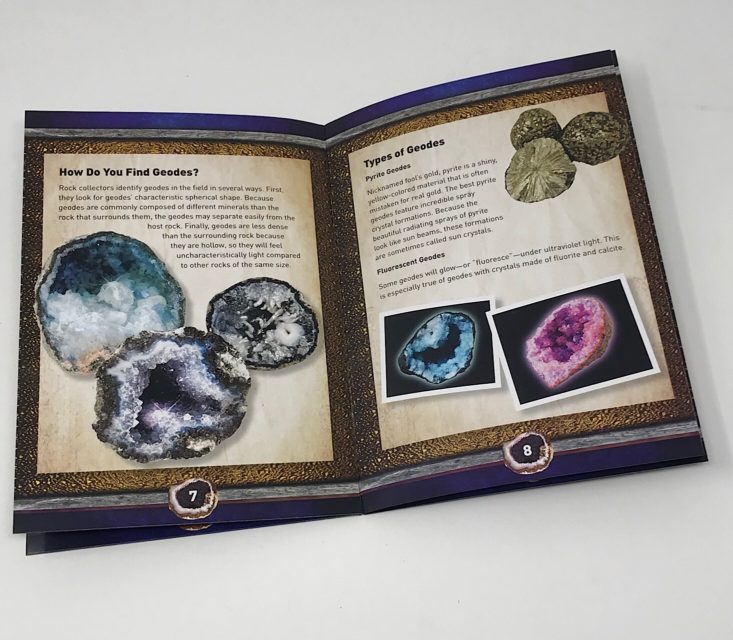

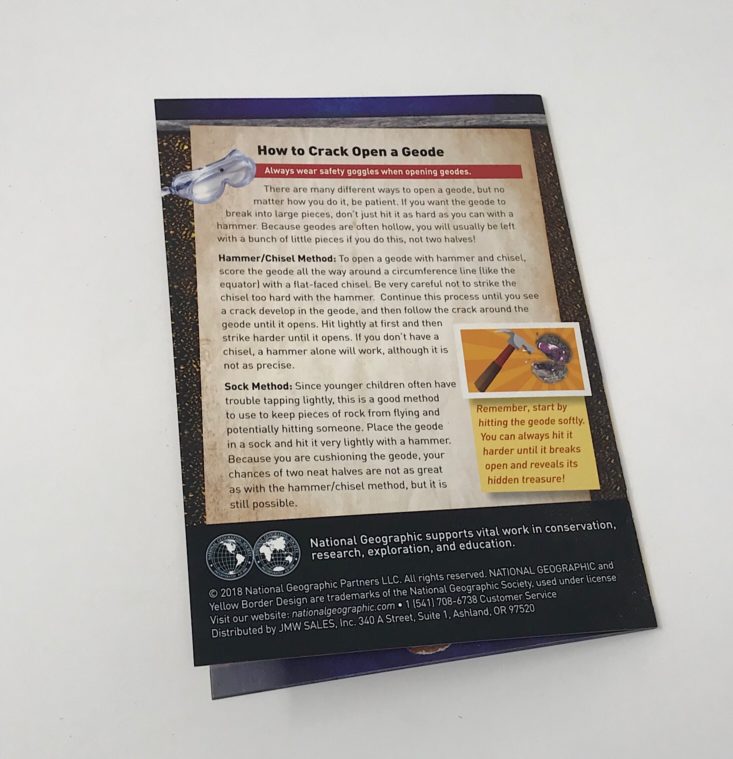
The book also provided several images of different types of geodes and details on how to crack open a geode.

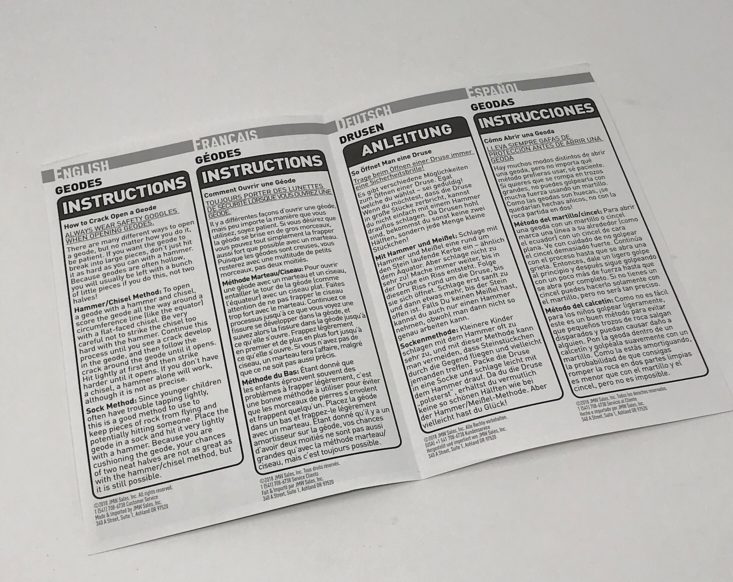
In addition to the learning guide, we received this instruction booklet, which was a little bit redundant since it was the same information from the learning guide. They recommended two different methods, the hammer and chisel method or the sock method which is a little safer for younger children since it contains any pieces that might fly off.
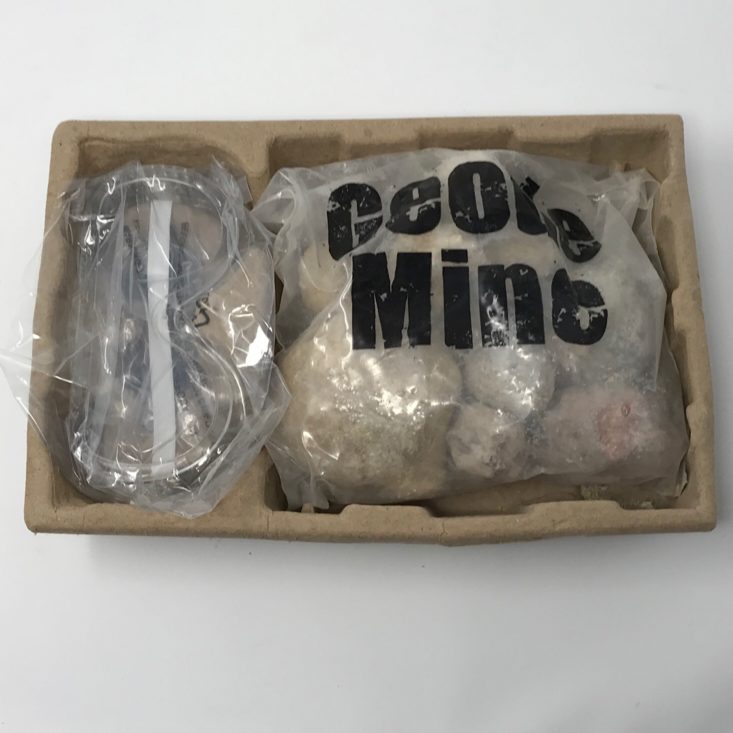
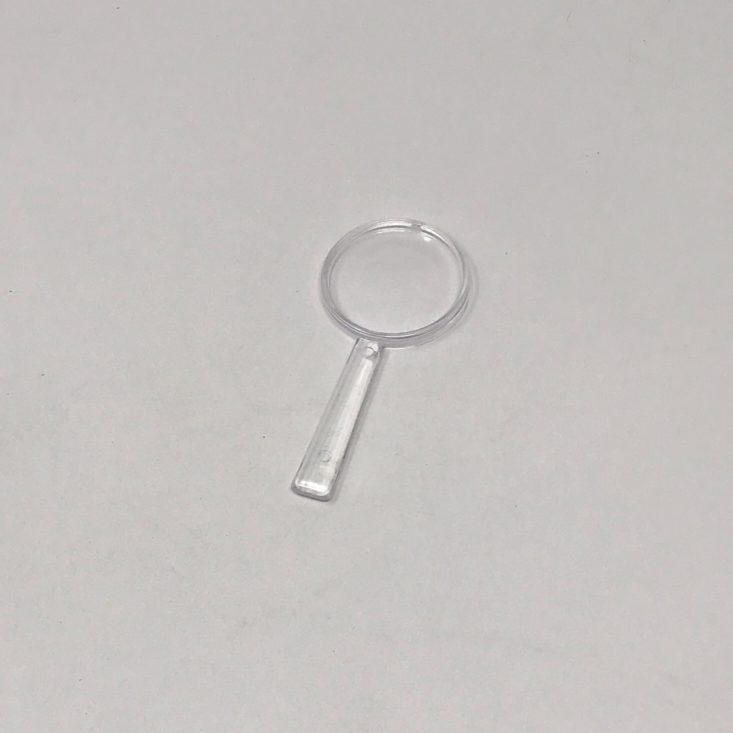
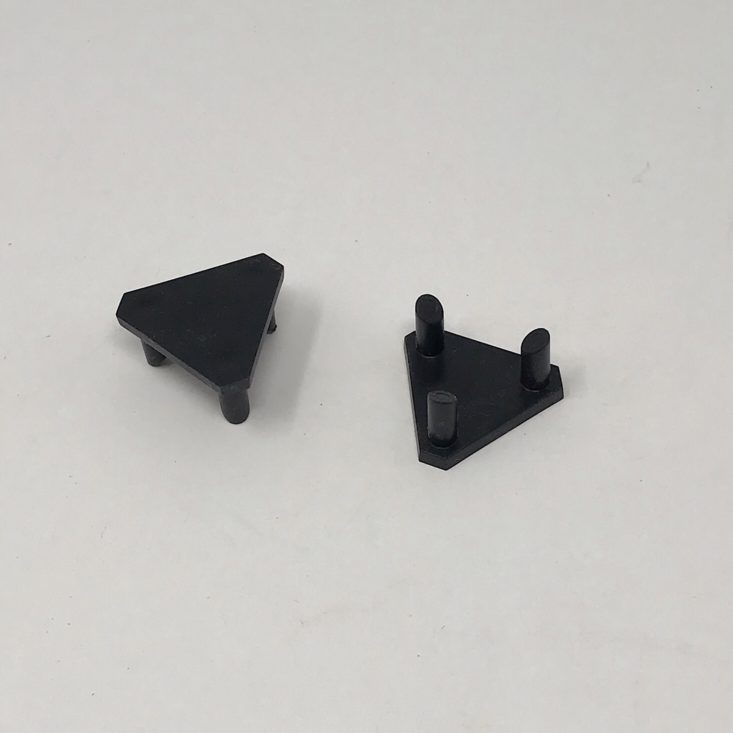
Everything came packaged neatly and they included some items for us to use when observing our geodes afterward; a mini magnifying glass and two little stands for our geodes. Considering there were 10 geodes, I think they could have sent a few more display stands, but I guess it was just nice that they thought to include them in the first place!


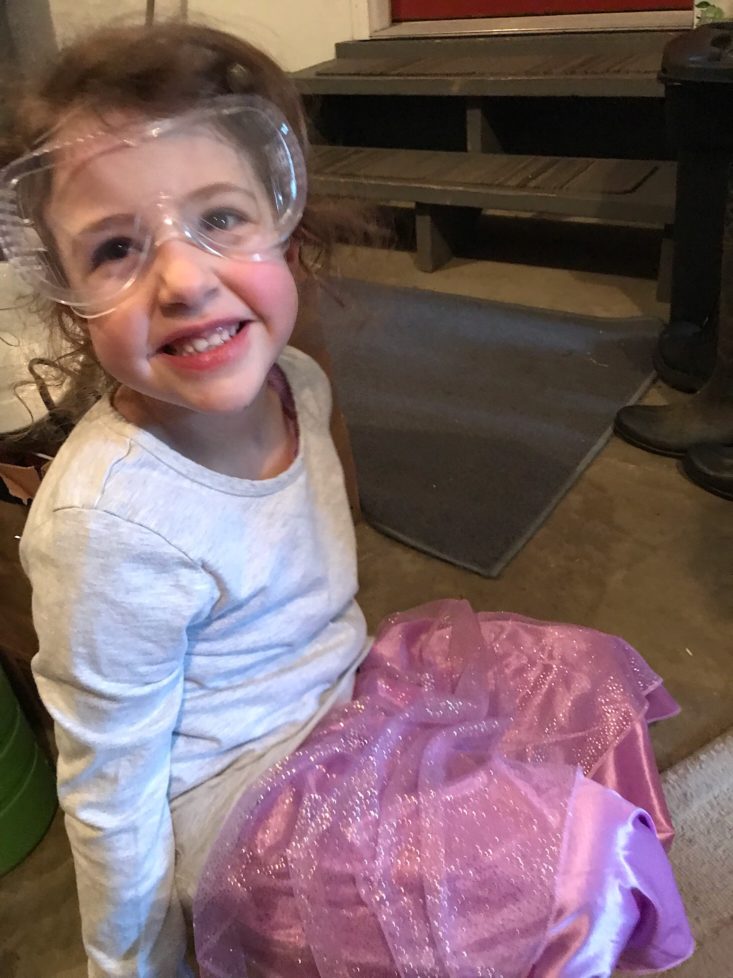
They also included a decent pair of safety goggles for us to use. We happened to be visiting my mom, Grammy, this day so we spread out in her garage since it was cold and got to work!
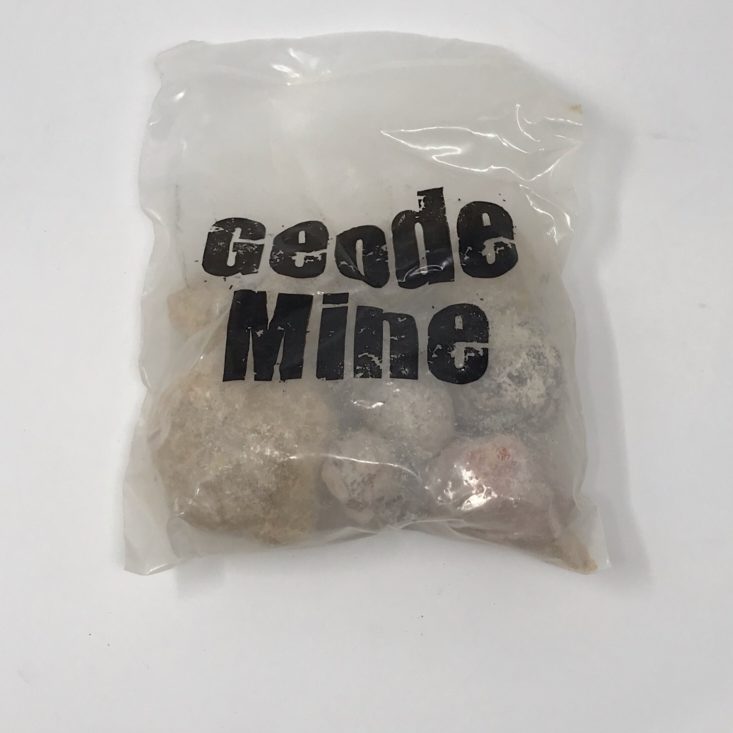
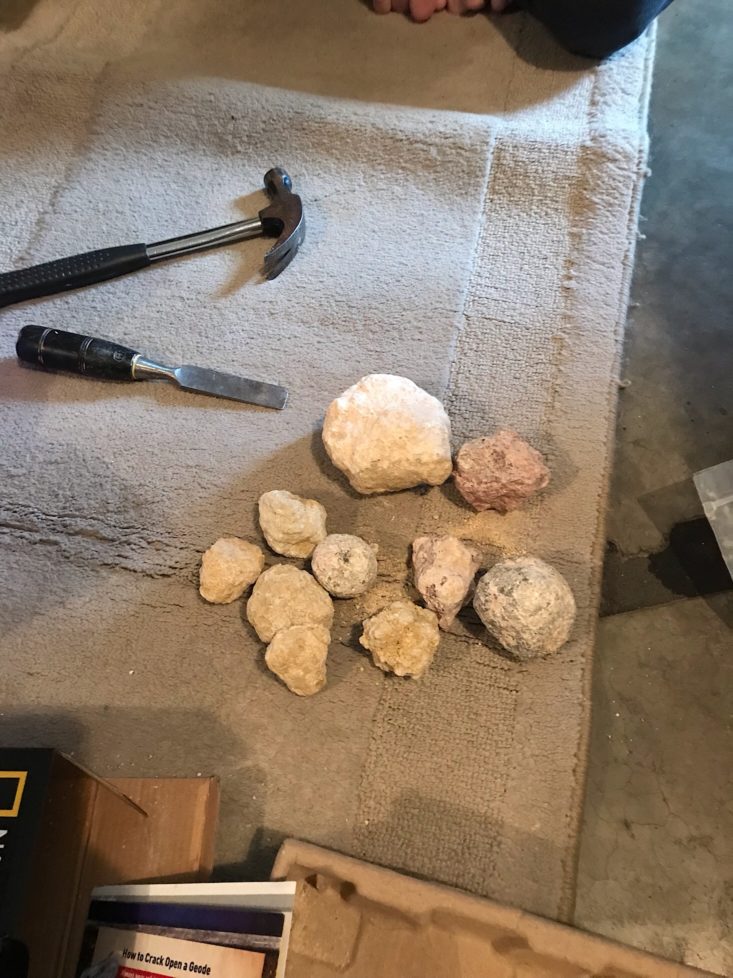
The geodes came in this big plastic bag which was good because there were little pieces of sediment everywhere. This helped to keep it a little cleaner! You can see the geodes are all different sizes. We decided to open half of the geodes this time, mostly because the fifth one we tried to open was incredibly difficult! This activity was still a good way to spend some time and I like that we still have five more to crack open at a later date.
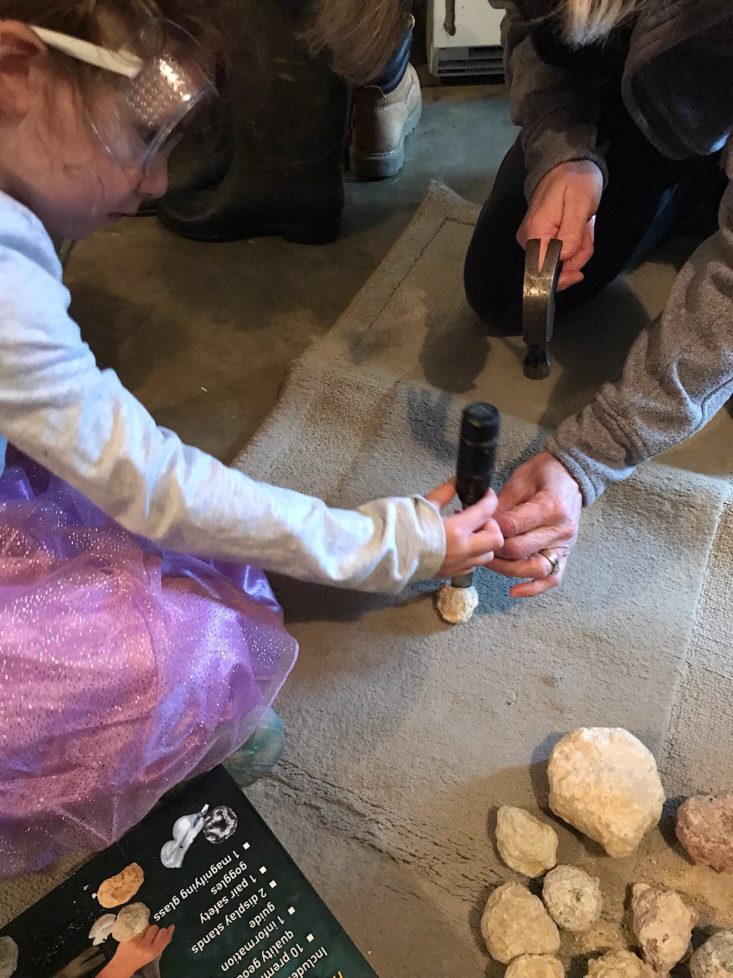

We started with a smaller geode and used the hammer and chisel method with a small hammer. This first one broke open with ease and a lot of little fragments!
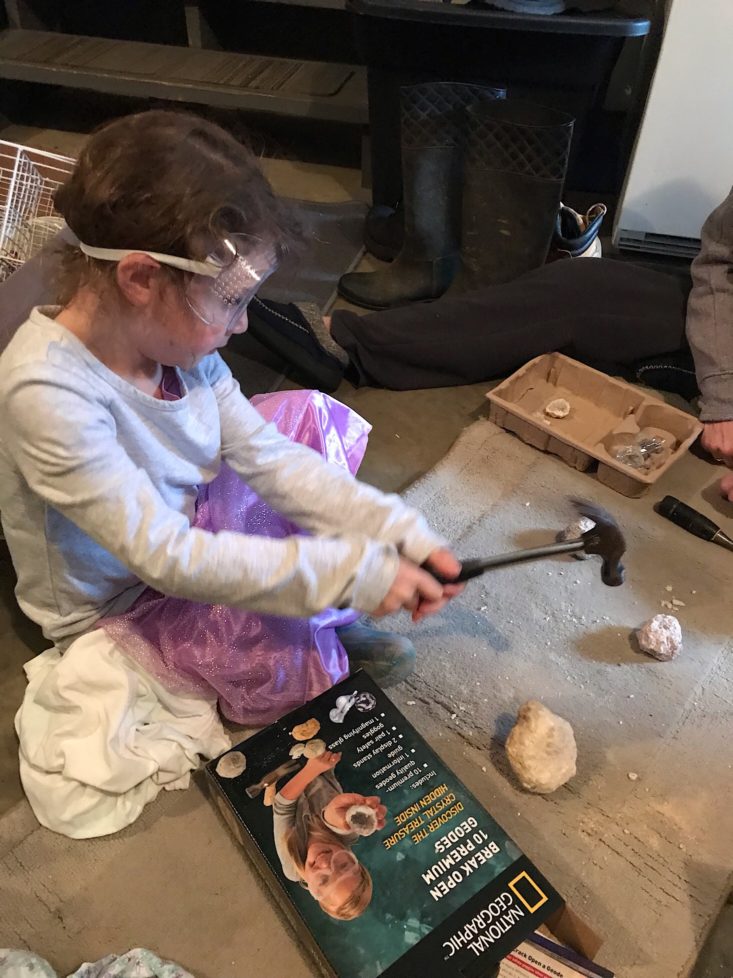
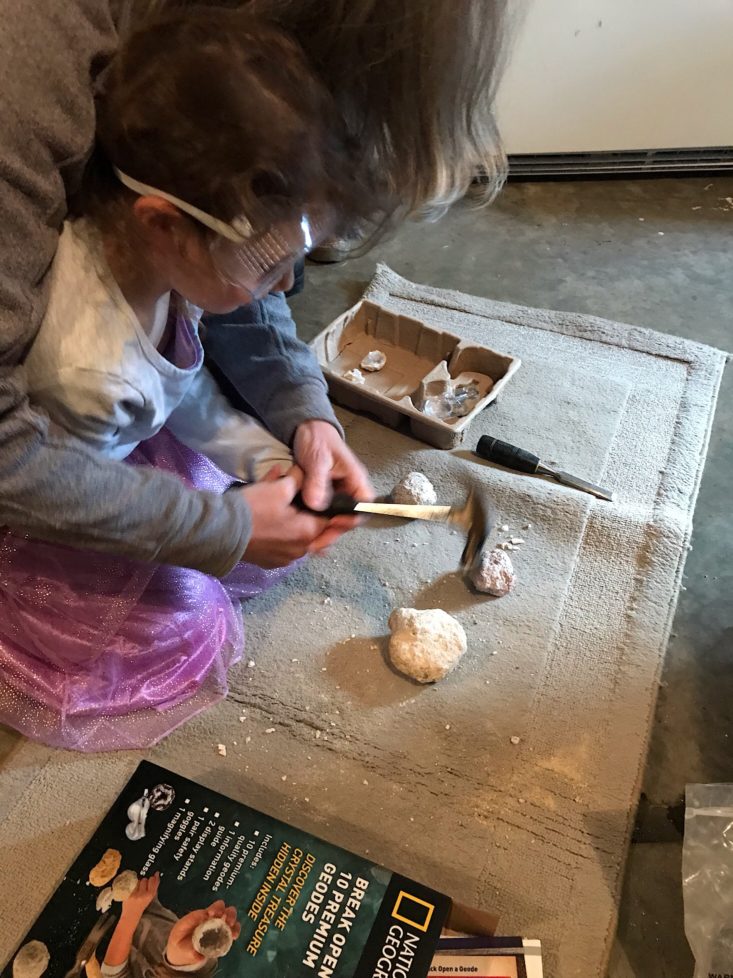
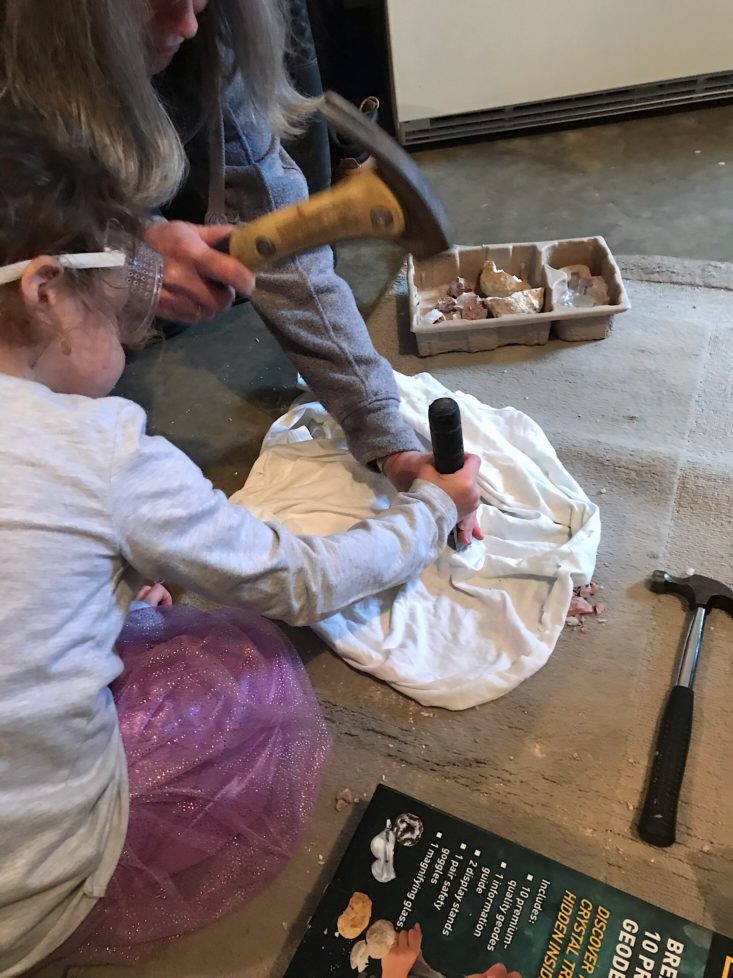
For the remaining four geodes we went through a variety of methods and took turns, with Grammy helping us. This was actually really fun to do with my four-year-old and see her little brain working to problem solve and try new methods when one didn't work. We tried just using a hammer with no chisel, wrapping up the geodes in an old t-shirt, getting a larger hammer, and moving the geodes from the carpet to the bare garage floor. Different methods worked for different geodes.
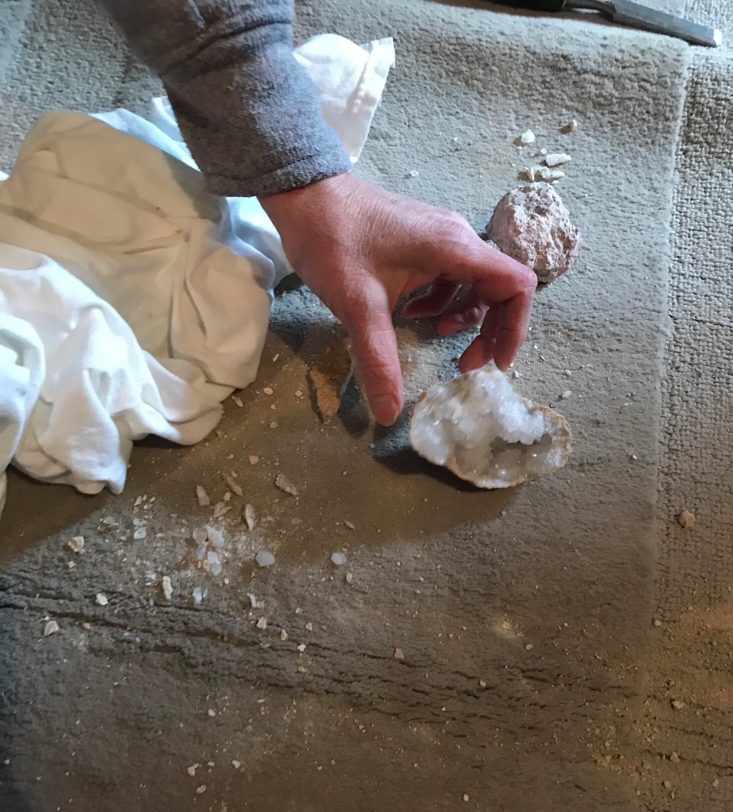
Some of them broke open a bit easier than others, but some were pretty stubborn. One even made a dent in the garage floor. Whoops -sorry, Grammy!
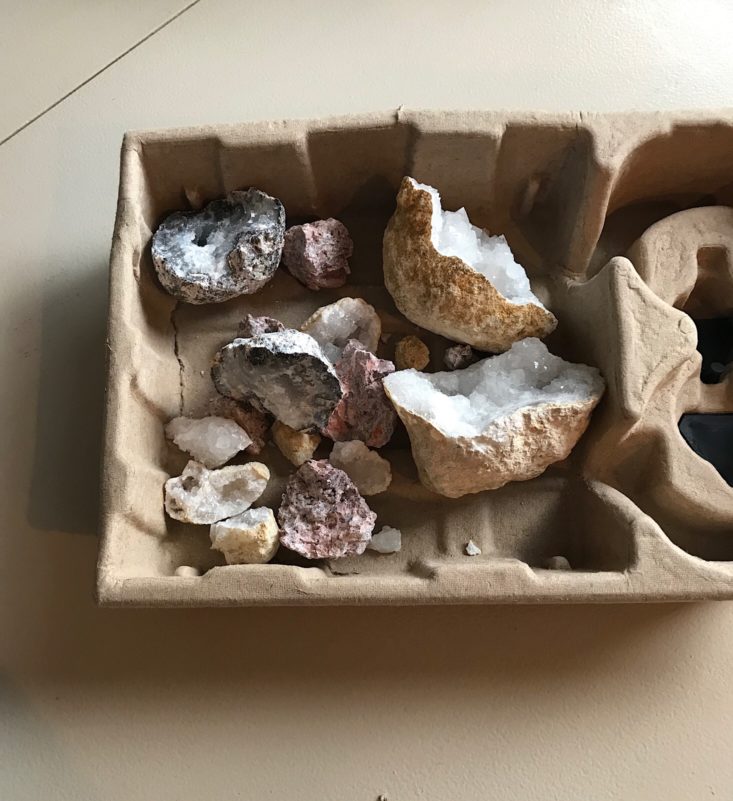
In the end, we had lots of pieces of open geodes. Some looked very similar, while others weren't quite as exciting.
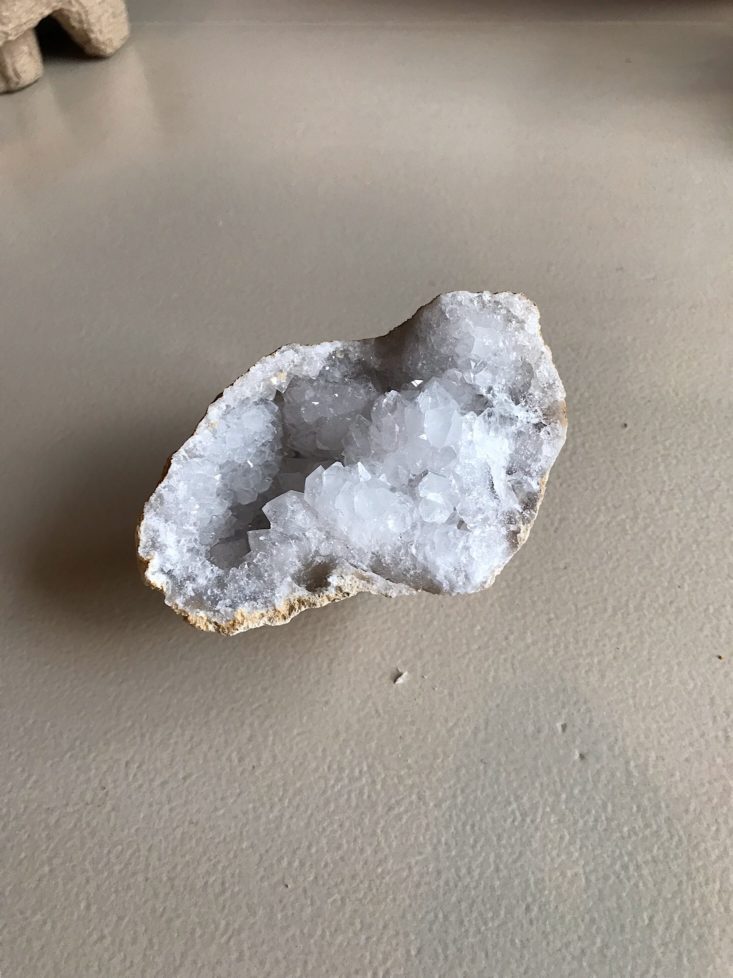
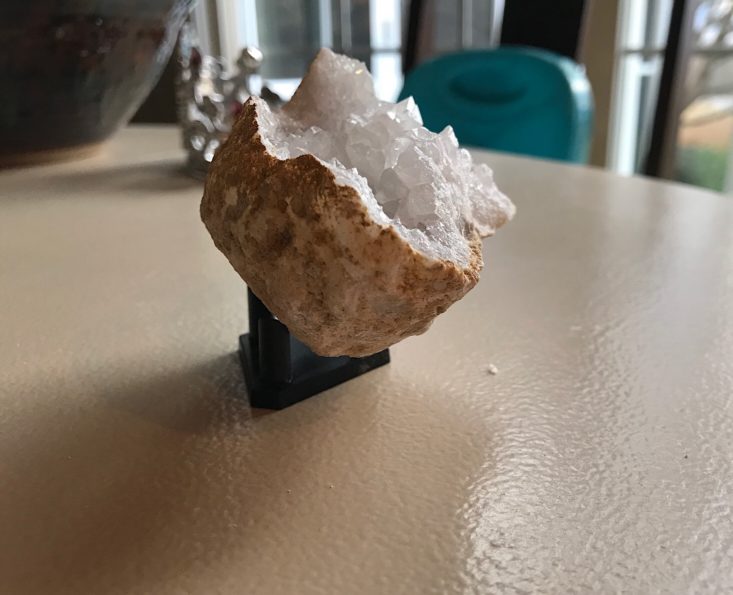
The stands worked well to display the open geodes.
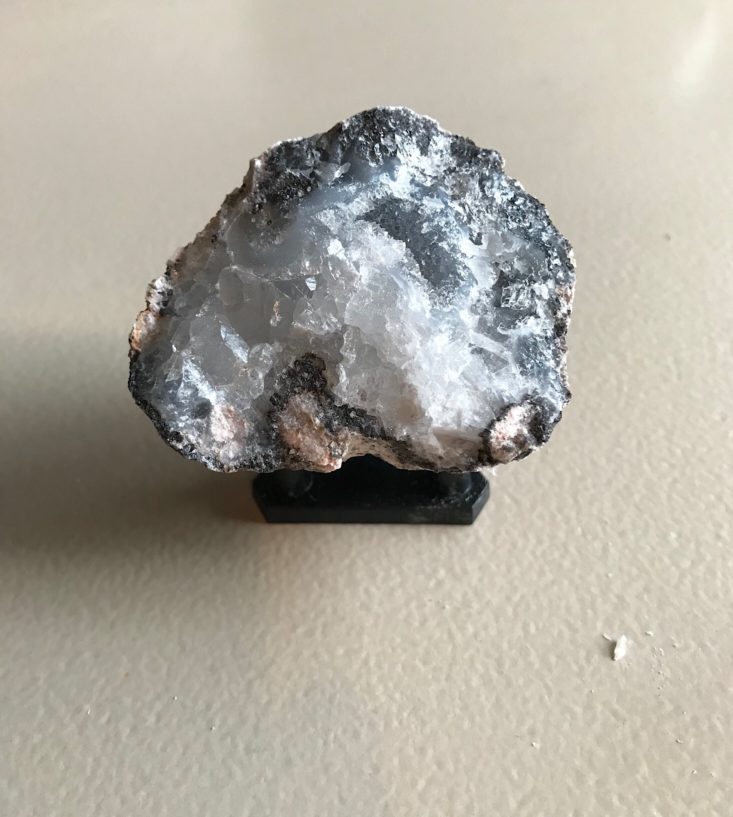
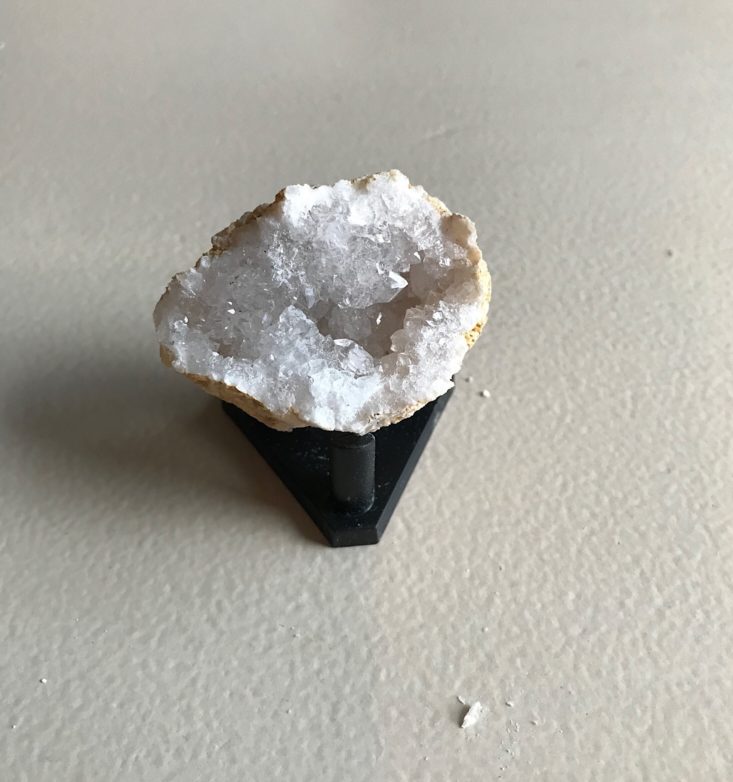
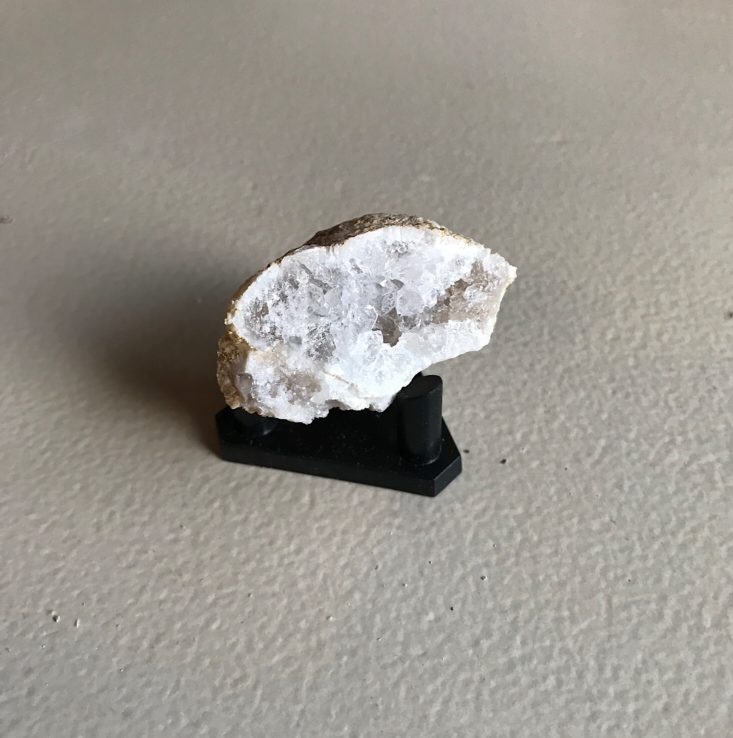
Here are the first three of them open. We tried to match them to the geodes in our learning guide, but this proved to be a bit difficult since so many of ours looked the same.
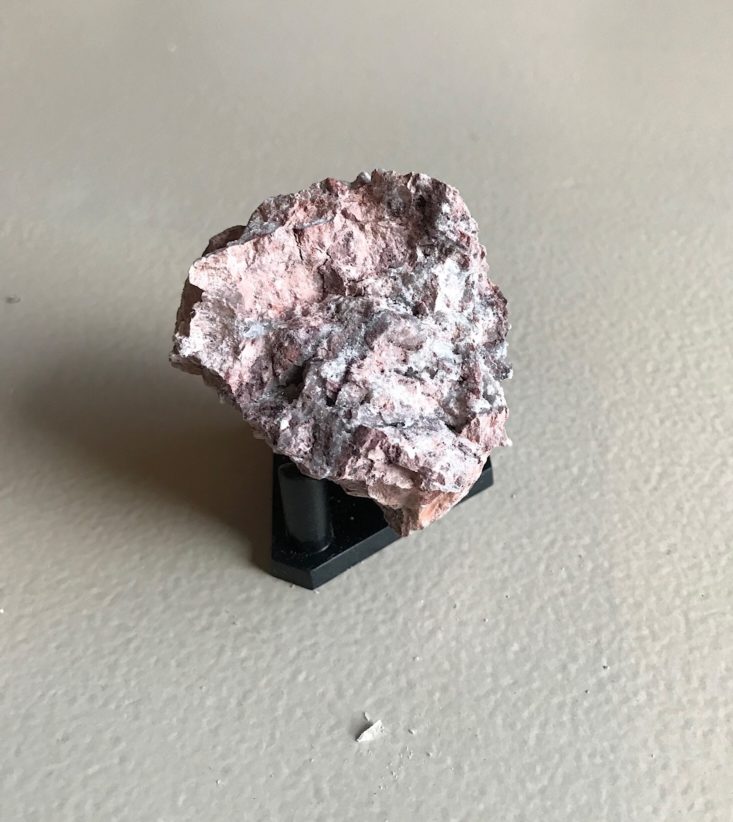

This geode was a little plain looking, although red in color, and when we used the magnifying glass we could see a little bit of variation in it.

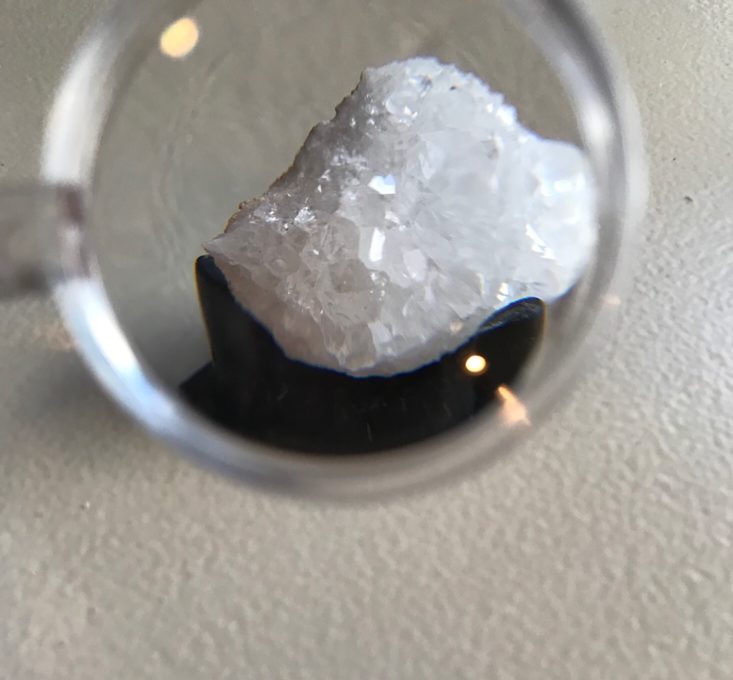
This last one looked very shiny and crystal-like, so of course, it was the favorite. There were so many nice points and edges to observe! Since all of the geodes looked so different, it would be easy to do a lesson on comparison and contrast to discuss the physical properties. You could also easily keep a little chart for each of your geodes to keep track of what methods you had to use to open them and rate their level of difficulty. There are a lot of learning extension possibilities for sure!
Verdict: This was another fun toy from Amazon’s STEM Toy Club that we enjoyed working on together. While the intended age is older than the age group for this box, this is one that most kids would probably need adult assistance with anyway, so this is still a good toy that anyone can enjoy. Plus, these National Geographic kits are nicely done; they are well organized, feature great educational materials and provide plenty of items so that you can use the kit more than once. This toy retails for $24.99 and we only paid $19.99, including free shipping, so I think this is a pretty good deal for a fun kit like this!
To Wrap Up:
Value Breakdown: The cost of the subscription was $19.99 and we received a toy valued at $24.99. That’s a savings of $5.00 on this toy.
If you like this box, you might also like: Tinker Crate (ages 9+), Groovy Lab in a Box (ages 8+), Bitsbox (ages 6-12)
Check out all of our Amazon STEM Toy Club reviews, more educational and STEM subscriptions for kids, and all Amazon subscription boxes in our subscription box directory!
Keep Track of Your Subscriptions: Add this box to your subscription list or wishlist!
What do you think of this month's toy from the Amazon STEM Club Toy subscription box?





Please do not enter your email address in the Name field or in the comment content. Your email address will not be published. Required fields are marked *. Remember to post with kindness and respect. Comments with offensive language, cruelness to others, etc will not be approved. See our full comment policy here.